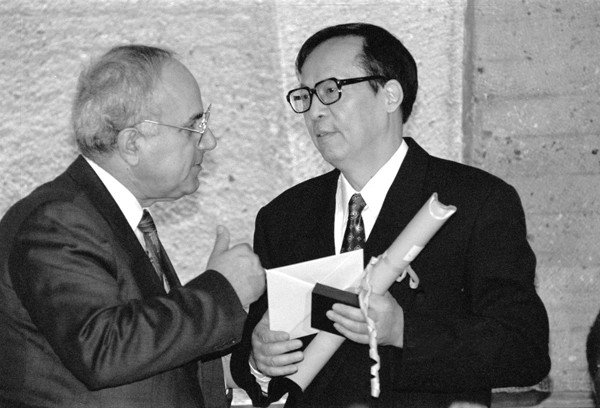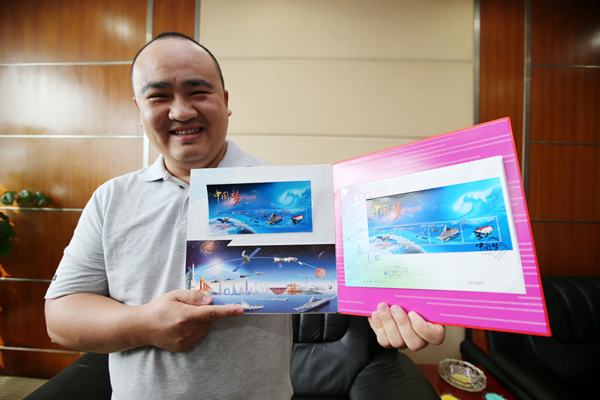 |
| Wang Xuan (right) wins UNESCO Science Prize in 1995. [Photo/Xinhua] |
Wang Xuan (1937-2006), an academician at both the Chinese Academy of Sciences and the Chinese Academy of Engineering, was the former vice-chairman of the CPPCC National Committee and former director of the Institute of Computer Science & Technology of Peking University.
He was in charge of the research and development of laser typesetting systems in the Chinese language and of electronic publishing systems, which were widely applied and brought technological revolution to the industry in China.
 |
|
Ye Cong, main driver of manned submersible Jiaolong, holds a set of special stamps issued to show the achievements made in China. [Photo/Xinhua] |
Ye Cong said he was extremely excited after he was announced as one of those noted as a "reform pioneer" and when he received the medal at the ceremony.
Ye, hailed as a "practitioner of manned deep-sea submersible" at the awards ceremony, is deputy director of the No 702 Institute of China Shipbuilding Industry Group Co and head of its Underwater Engineering Research and Development Department.
Born in 1979, he has witnessed the entire evolution of China's manned deep-sea submersible program and the development of its marine industry in the past 40 years' reform and opening-up.
"Prior to the Jiaolong, our manned deep-sea submersible could only dive no more than 600 meters below the surface of the sea," Ye said, proudly adding that the Jiaolong submersible can dive as deep as 7,000 meters.
He said the honorary title provided great inspiration to his team.
Ye has taken part in more than 50 deep sea missions as the main driver of Jiaolong.
According to him, Jiaolong has eight submariners that have obtained certificates and can independently operate submersibles. The submersible Shenhai Yongshi, or Deep Sea Warrior, which was put into operation in 2017, also has eight submariners.